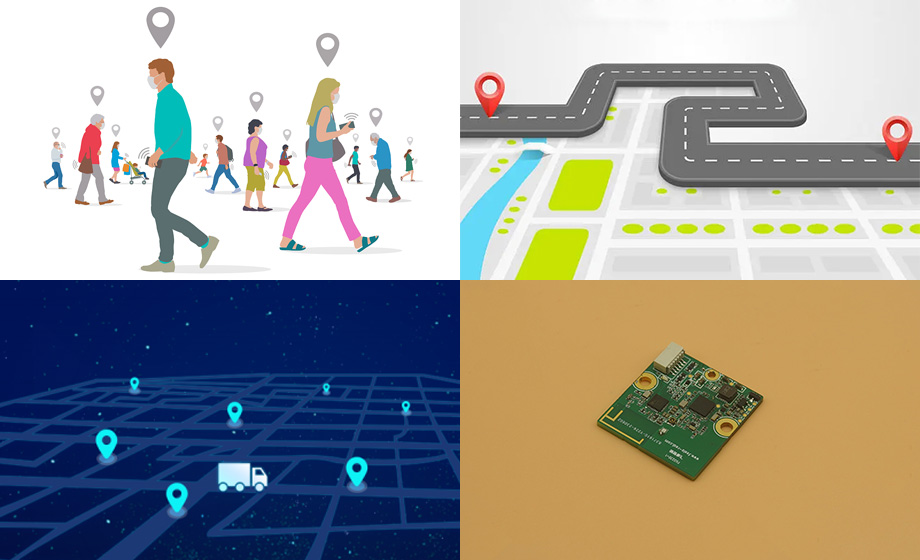Introduction:
In today's intelligent era, the importance of positioning technology is becoming increasingly prominent. From mobile communications to the Internet of smart Things, accurate location data is critical to both user experience and business operations. However, traditional positioning technology does not perform well in some scenarios, such as deep-sea exploration and indoor navigation. In order to solve these problems, the UWB ranging and positioning solution came into being, and it has become the ultimate solution in several fields with its excellent performance and wide application fields.

Part One: Introduction of UWB ranging and positioning technology
UWB technology originated in the late 1980s, it has a wider frequency band and a shorter pulse width than the traditional narrowband communication technology. This allows UWB technology to achieve high precision positioning by measuring the time delay of the signal. Compared with other positioning systems such as GPS, UWB technology has higher positioning accuracy in indoor environments and is more resistant to electromagnetic interference.
Part two: The application of UWB in indoor positioning field
1. Indoor navigation system: Ultra-wideband UWB technology can provide centimeter-level positioning accuracy, so that the indoor navigation system can achieve high-precision positioning and navigation functions. This is very helpful for navigation and positioning inside large shopping malls, airports, hospitals and other buildings.
2. Asset tracking and management: In logistics, warehousing and other fields, UWB technology can be used to track and manage the location and status of items. By binding UWB tags to items or equipment, the location, status and movement trajectory of items can be monitored in real time, improving the efficiency and safety of logistics operations.
3. Indoor location services: UWB technology plays an important role in indoor location services. By arranging a certain number of UWB base stations inside the building, combined with UWB tags and mobile devices, indoor positioning services can be provided to meet people's needs for navigation, search, location sharing and so on.
Part three: The application of UWB in industrial automation
1. Workshop positioning and navigation: UWB technology can be applied to the field of industrial automation, by arranging UWB base stations and labels in the workshop, to achieve the positioning and navigation of mobile devices and robots. This can improve production efficiency and safety, and enable intelligent shop floor management.
2. Safety monitoring: UWB technology also has a wide range of application prospects in industrial safety monitoring. By binding UWB tags to potentially hazardous areas or devices, you can track and monitor personnel and devices in real time, and timely warn and handle potential security risks.
Part IV: UWB technology challenges and prospects
1. Technical challenges: Although UWB technology performs well in terms of positioning accuracy and anti-interference, there are still some challenges in terms of deployment and cost. The transmission distance of UWB signal is relatively short, and multiple base stations need to be arranged in the target area to ensure the coverage. In addition, UWB technology also faces standardization issues in terms of standards and spectrum planning.
2. Market prospects: Despite some challenges, UWB technology still has broad market prospects in various industries. With the popularity of the Internet of Things and smart devices, the demand for high-precision, real-time positioning will continue to grow. Indoor navigation, smart home, industrial automation and other fields will become the main application scenarios of UWB technology.
Conclusion:
As a breakthrough technology solution, the UWB ranging and positioning scheme is getting more and more attention and application. It shows excellent performance and application potential in indoor positioning, industrial automation and other fields. Although there are some deployment and cost challenges, with the continuous development of technology and the improvement of standards, ultra-wideband UWB technology is expected to become the dominant technology in the future location field.
By leveraging ultra-wideband UWB technology, we can achieve more accurate and efficient positioning and navigation functions to provide a better experience for our users. At the same time, all industries will also benefit from the wide application of UWB technology to improve work efficiency and safety. In the future development, it is not only necessary to continue to innovate and improve technology, but also to strengthen standardization and cooperation, jointly promote the development of ultra-wideband UWB technology, and realize its application in various fields.
In the process of landing the application, we need to pay attention to privacy and security issues, ensure the lawful use of data and protect the rights and interests of users. Through reasonable planning and cooperation, ultra-wideband UWB technology will become an important support technology in the future intelligent era, helping people live and work more conveniently and efficiently.



